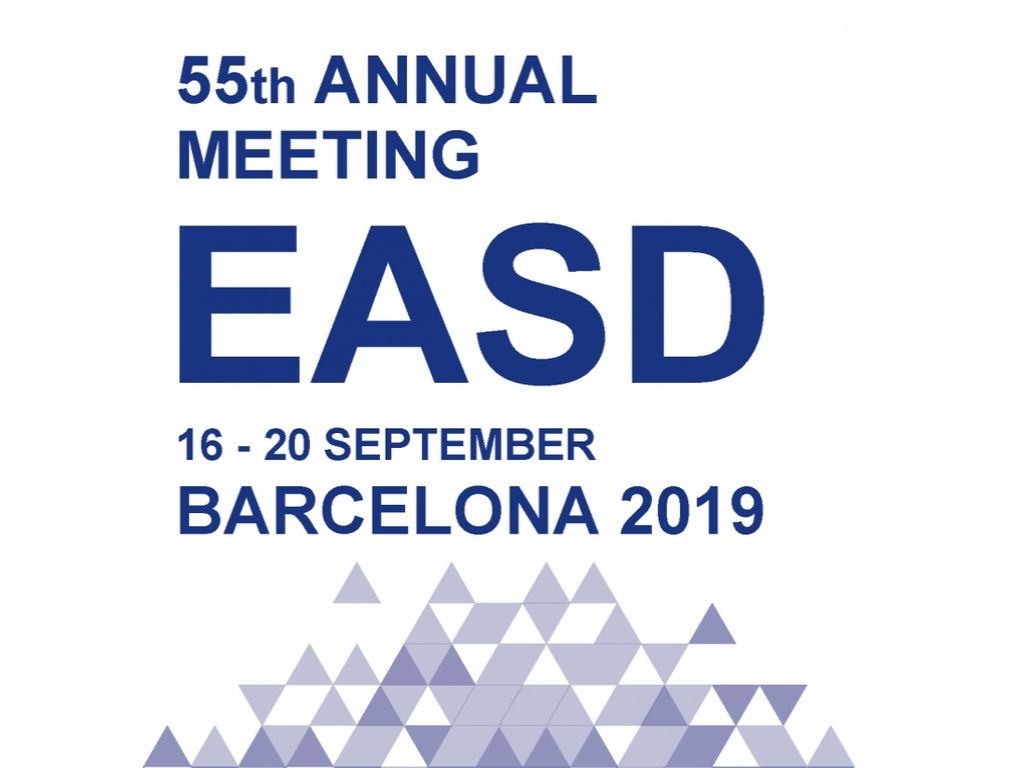
For 55 years, leading researchers from around the world have gathered for the annual meeting of the European Association for the Study of Diabetes (EASD). At this year’s meeting, from September 16-20 in Barcelona, Spain, more than 50 studies were presented by Breakthrough T1D researchers, funded now or in the past, working to find cures for type 1 diabetes (T1D) and improve the lives of those living with the disease today. Highlights of Breakthrough T1D-funded research shared at the conference included:
It Works in T1D!
Breakthrough T1D Research Area: Improving Lives (Glucose Control)
vTv Therapeutics has developed a glucokinase activator, called TTP399, and presented their phase II-part 1 clinical trial, in which 19 people were recruited—eight to the group getting TTP399, and 11 to placebo. At 12 weeks, the TTP399 group had a significant and clinically meaningful reduction of 0.6% in their HbA1c, whereas those in the placebo group increased their HbA1c by 0.1%. The enzyme glucokinase works by breaking down glucose—a final product of the ingested food—in the liver, thus lowering blood glucose levels.
Breakthrough T1D Leadership: vTv Therapeutics joined forces with Breakthrough T1D in 2017 to test TTP399 in people with T1D. These promising findings demonstrate that advancing to phase II-part 2, to confirm the results in a larger and more diverse T1D population, is essential for the T1D community.
Viral and Genetic Causes of T1D
Breakthrough T1D Research Areas: Cures (Immune Therapies)
The Environmental Determinants of Diabetes in the Young (TEDDY) featured Heikki Hyoty, M.D., Ph.D., and Anette-Gabriele Ziegler, M.D., who gave two presentations on the viral and genetic causes of type 1 diabetes in first-appearing islet autoimmunity (stage 1). Several viruses were associated with islet antibody appearance, and a total of 47 genetic variations were found in the TEDDY study. This genetic risk score based on these 47 variations will be applied to high-throughput infant screenings in Europe, with participating infants enrolled in the POInT study.
Breakthrough T1D Leadership: Breakthrough T1D has given five grants to Dr. Ziegler, including the pre-POInT study, and two grants to Dr. Hyoty, for preventive vaccine technology that targets enteroviruses.
SGLTs in T1D: BMI May Be the Key
Breakthrough T1D Research Area: Improving Lives (Glucose Control)
Breakthrough T1D-funded investigator Thomas Danne, M.D., presented an analysis of Zynquista (sotagliflozin) for T1D, grouped by their body mass index (BMI): one had a BMI that was above or equal to 27 kg/m2; one had a BMI that was below 27 kg/m2 (this was the cutoff point advised by the European Commission in their approval), showing that people with a BMI above 27 demonstrated greater HbA1c reductions and time in range improvements, as well as slightly lower DKA rates than the lower BMI group. The European Commission got it right in approving it for the higher BMI group, apparently!
Breakthrough T1D Leadership: Breakthrough T1D was one of the first to support an early clinical trial of Zynquista to see if the drug worked for people with T1D. In this and later clinical trials, the drug showed a significant reduction in blood-sugar levels, and also improved other key health measures, such as time in range, body weight and blood pressure, contributing to better outcomes for many people with T1D.
DIY Hybrid Closed Loop: Better Outcomes, Better Living
Breakthrough T1D Research Area: Improving Lives (Artificial Pancreas)
The DIY hybrid closed loop from OpenAPS demonstrated data from 23 participants, with 80% time-in-range and a 1.2% reduction in HbA1c—compared with the control group, which was using open loop therapy. Time in hypoglycemia (low blood sugar) was also significantly reduced, with 1.7% for people on the OpenAPS device, compared with 6.9% in people on open loop. This reflects an extra two hours per day in range and a reduction in hypoglycemia of about 1.2 hours per day.
Breakthrough T1D Leadership: We funded OpenAPS to develop algorithm enhancements to their DIY technology. This research is using multiple data sets, allowing them to compare healthy people to T1D ‘typical’ users, as well as T1D DIY closed loop artificial pancreas users. OpenAPS will subsequently develop potential adjustments to artificial pancreas algorithms that are 1) tuned to expect and promote stable hourly and daily rhythms and are 2) customizable to an individual’s needs. These adjustments are poised to provide improvements to glucose control, helping maintain the quality of life for people with type 1 diabetes.